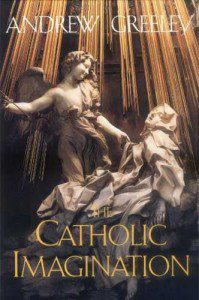Lent is not only the season of giving up bad habits or taking on new spiritual practices for 40 days. Lent is also the season of media outlets hawking sensationalized stories about the historical Jesus to sell copies or attract viewers during the built-up to Easter.
Perhaps you have seen headlines in recent days such as, “Investigators may have discovered earliest evidence of Christian iconography in Jerusalem” or “‘Jesus Discovery:’ Jerusalem Archeology Reveals Birth Of Christianity.” Whenever you see exaggerated archaeological claims near Christmas or Easter, it is time to put on your hermeneutics of suspicion. Translation: be wary, be skeptical, and proceed with caution.
MSNBC interviewed John Dominic Crossan about this latest ‘discovery’:
There’s nothing that associates [the Patio Tomb] with Joseph of Arimathea. This whole area is riddled with tombs, as far as we can tell. This is a rich Pharisee, a rich person in the 1st century who believes in the resurrection. We always thought that [the image of] Jonah coming out of the fish was peculiarly Christian. Maybe that’s one more thing that the early Christians took from Jewish tradition, and this would be the first evidence.
Crossan linked to this interview on his Facebook wall, and added the quip, “The interpretation is off the wall, but watch the wall,” then the clarifying comment, “Just checked my copy of Rahmani’s Catalogue of Jewish Ossuaries, and the proposed Jonah-Fish is certainly a Nephesh Tower. I could see that clearest on his Plate 33, 231:L and Figure 26 on page 31.
The blog of The American Schools of Oriental Research (ASOR), located at Boston University, has a much more extensive take on the find. The following is an excerpt of the conclusion. First the good news:
The technology that was used to explore this tomb is stunning and auspicious. Certainly the applications for it will be both broad and deep. Tabor and Jacobovici are to be congratulated for leading in the development and employment of these robotic and photographic technologies, and it is hoped that these technologies can be refined even more during the coming months and years.
Next, the more sober news:
this is a fairly standard, mundane Jerusalem tomb of the Late Second Temple period. Its contents are important and interesting, but there is nothing that is particularly sensational or unique…. Stringing together a series of “maybe this” or “perhaps this” or “could it be” will sell books, but it will not convince careful historians nor will it change the facts. Careful historians and students want evidence and reasonable conclusions. Tabor and Jacobovici (much as I like these two people on a personal level) simply do not provide the goods. They have stretched the evidence far beyond the breaking point in their attempt to make sensational claims.
We need more even-handed scholarship and less scholars sucumbing to the temptation to make exaggerated claims in order to sell books and sign deals for overhyped television documentaries.
For Further Study
Jon Douglas Levenson and Kevin Madigan, Resurrection: The Power of God for Christians and Jews (Yale University Press, 2009):
Although the resurrection of the dead is widely understood to have been a part of Christianity from its beginnings nearly two thousand years ago, many people are surprised to learn that the Jews believed in resurrection long before the emergence of Christianity. Madigan is professor of the history of Christianity, Divinity School, Harvard University. Levenson is Albert A. List Professor of Jewish Studies, Divinity School and Department of Near Eastern Languages and Civilizations, Harvard University.
Update:
Steven Fine, Professor of Jewish History, Yeshiva University, has now weighed into the fray in another ASOR blog post. Some highlights (h/t: Larry Hurtado):
I was a member of a team assembled last summer by a major media outlet to evaluate this project…. I noted that this was a very common type of burial monument in the first century…. The interpretation presented by Professor Tabor is not grounded in the evidence, nor in even the most basic rules of art-historical analysis…. The “Jonah Fish” is just the next installment in the Jesus-archaeology franchise—timed, as always, to precede a major Christian feast…. I, for one, am wearied by the almost yearly “teaching moment” presented by these types of “discoveries.” I am hopeful, however, that—this time—a forceful and quick display of unanimous dissent by the leading members of the academic community will be taken seriously by the media and the public at large.
There are quite a few other major scholars debunking this latest episode of shoddy scholarship meets irresponsible journalism at the ASOR blog.
The Rev. Carl Gregg is a trained spiritual director, a D.Min. candidate at San Francisco Theological Seminary, and the pastor of Broadview Church in Chesapeake Beach, Maryland. Follow him on Facebook (facebook.com/carlgregg) and Twitter (@carlgregg).
















